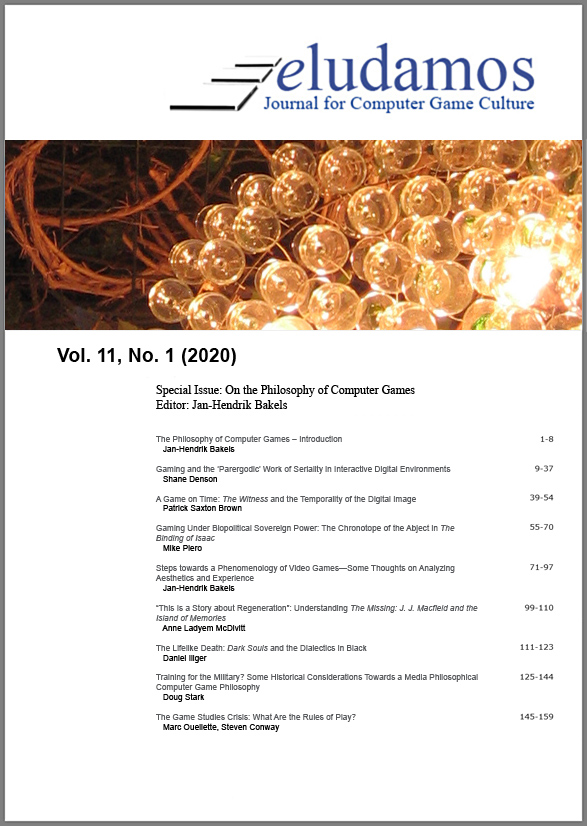Gaming and the ‘Parergodic’ Work of Seriality in Interactive Digital Environments
DOI:
https://doi.org/10.7557/23.6352Abstract
Twentieth-century serial figures enacted a “parergonal” logic by crossing boundaries between various media, slipping in and out of their frames, and showing them—in accordance with a Derridean logic of the parergon—to be reversible. With the rise of interactive, networked, and convergent digital media environments, these medial logics are transformed. A figure like Batman exemplifies the transition from a “parergonal” to a new “parergodic” logic; the latter term builds upon Espen Aarseth’s notion of the “ergodic” situation of gameplay—where ergodics combines the Greek ergon (work) and hodos (path), thus positing nontrivial labor as the aesthetic mode of players’ engagement with games. Ergodic media give rise to new forms of seriality that accompany, probe, and trace the developmental trajectories of the new media environment and the blurring of relations between work and play, between paid labor and the incidental work culled from our leisure and entertainment practices.Publication Facts
Metric
This article
Other articles
Peer reviewers
0
2.4
Reviewer profiles N/A
Author statements
Author statements
This article
Other articles
Data availability
N/A
16%
External funding
No
32%
Competing interests
N/A
11%
Metric
This journal
Other journals
Articles accepted
12%
33%
Days to publication
14
145
Indexed in
-
—
- Academic society
- N/A
- Publisher
- Septentrio Academic Publishing
Downloads
Published
2021-09-03
How to Cite
Denson, S. (2021) “Gaming and the ‘Parergodic’ Work of Seriality in Interactive Digital Environments”, Eludamos: Journal for Computer Game Culture, 11(1), pp. 9–37. doi: 10.7557/23.6352.
Issue
Section
Perspectives








